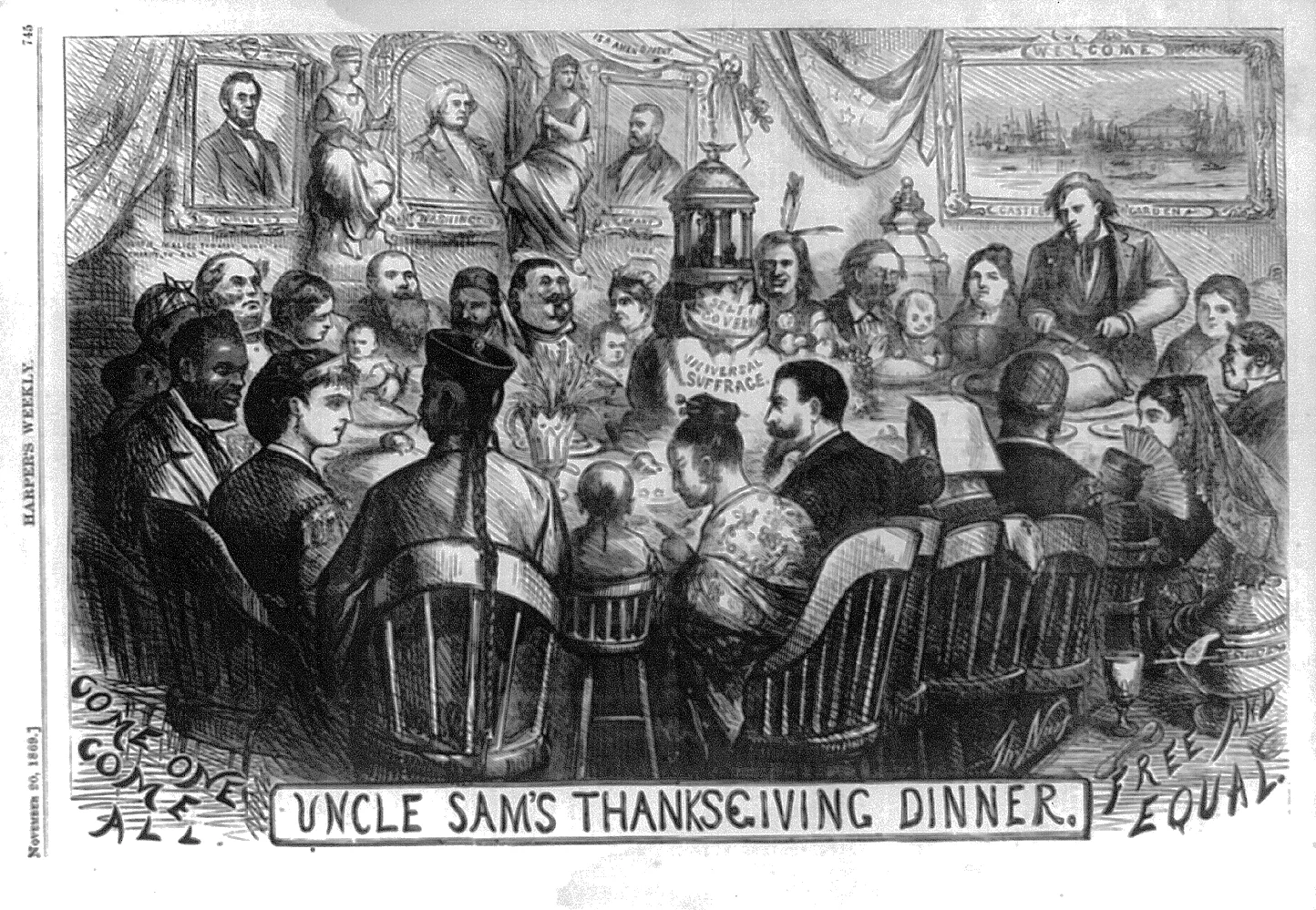
The Tariff Debacle Is Renewed
Trump's wrongheaded economics fuels his unconstitutional tariff.
Just this past week, President Donald Trump took two actions that send the stock market reeling. First, he escalated his tariff war against China by announcing massive new, additional 100-percent tariffs on a wide range of Chinese goods, in retaliation for the sweeping new restrictions that China imposed on the export of rare-earth minerals so vital to every area of the electronics industry, from jet planes to semiconductors. Second, he announced that relations will “all be fine” at which point the market roared back and recovered about 70 percent of the earlier losses.
The market has voted on its view of tariffs. It also dislikes any extra uncertainty, because no one quite knows what the next interaction will bring. It is therefore critical to stop that up-and-down cycle, which means that Trump has to rid himself of Trump’s fundamental analytical fixation that his targeted tariffs will hurt only the Chinese exporters, but not the many American importers (and their partners) who use these products. Thus far, he is mum about the drubbing that American stocks took on Friday, October 10, in all three major indices: the S&P 500, the Nasdaq composite, and the Dow. Instead, he clings to the myth that additional tariff revenues will close the current federal budget deficit. In so doing, he fails to address China’s fateful decision not to purchase American soybeans, which has transformed an export market of some $12.6 billion in sales in 2024 to one in 2025 with zero sales, perhaps leading to an impending industry-wide subsidy of $10 billion for displaced farmers, with more losses and more subsidies to come. Try as he may, Trump cannot grasp these basic economic truths: first, that any tax imposed on one party to a voluntary transaction (China) necessarily gets passed on in whole or in part to another (their American purchasers), and second, no one benefits from the sales lost to these high tariffs. There are no reciprocal trade deals that can work, or have worked, and increasing anxiety continues to spread as the president presses forward with a losing policy.
At this point, the real question is why and how he gets away with this destructive behavior. It is widely known that multiple statutes form a dense web of rules on what tariffs can be imposed and how. The protracted opposition to the President rests on a potent combination of arguments. The first stresses that he has no power to impose tariffs under IEEPA—the International Emergency Economic Powers Act—under which Section 1701 holds that President’s statutory powers “may only be exercised to deal with an unusual and extraordinary threat with respect to which a national emergency has been declared for purposes of this chapter and may not be exercised for any other purpose.” In VOS Selections v Trump, the Court of Appeals for the Federal Circuit held, albeit only on narrow grounds targeted to this occasion, that the President’s novel tariffs exceeded his statutory authorization in this instance, leaving open the question of whether tariffs might be approved under other situations. Accordingly, the majority then denied a preliminary injunction that could have kept Trump under wraps until the Supreme Court decides the case, which could easily take months. The four-judge concurrence did not display such reticence but insisted categorically that IEEPA “does not authorize the President to impose any tariffs.” The four-judge dissent said that the plaintiffs, on their motion for summary judgment, failed to show that Trump’s action did not “deal with an unusual and extraordinary threat, having foreign sources, to the national security or foreign policy or economy of the United States.”
There are two reasons to part company with the dissent. First, the bulk of the evidence shows that tariffs and trade regulations fall into different camps so that the President could not act under IEEPA at all, which does not refer to tariffs, while making repeated references to their constitutional opposite, regulation. Second, of even greater clarity, the Trump Executive Order, No. 14257, packs multiple untruths into a single sentence: “Regulating Imports With a Reciprocal Tariff To Rectify Trade Practices That Contribute to Large and Persistent Annual United States Goods Trade Deficits.”
That statement makes no effort to explain why country-to-country deficits matter, when all that they indicate is that all these deficits tend to even out when full supply chains are examined. Thus, if A sells large quantities of goods to B, A’s trade surplus is reduced when it buys inputs from C, while B’s trade deficit shrinks when it sells its goods to D. All that matters is that gains from trade that flow from each transaction cumulate while the deficits cancel out.
Nor does his statement refer to any emergency at all, given that it claims these trade imbalances started in 1934, which makes them a chronic condition, and a benign one at that. IEEPA contains no definition section, so ordinary use language governs the interpretive issue. From early Roman and English law to the present, an emergency, or necessity, requires a situation that poses imminent danger to life or limb, or in the financial world, an immediate meltdown of basic exchanges. Ordinary language never sanctions Trump’s actions taken here, let alone to make, without any evidence, his overwrought claims about the perils of bilateral deficits:
Large and persistent annual U.S. goods trade deficits have led to the hollowing out of our manufacturing base; inhibited our ability to scale advanced domestic manufacturing capacity; undermined critical supply chains; and rendered our defense-industrial base dependent on foreign adversaries.
As noted, neither ordinary language techniques nor basic economic theory provides a scintilla of support for these claims, so on this point, Trump can only prevail if his word is final on the contested question of whether an emergency exists to which only Trump has the right to respond. At this point, the debate shifts to a discussion over the scope of the executive power under the Constitution, which provides that “[t]he executive Power should be vested in a President of the United States,” who “shall take Care that the Laws be faithfully executed,” and states that he is the Commander-in-Chief of the armed forces. From these three clauses, it is clear first, that there is “a” President, and not two, or more; that he should take care that the Law, as enacted by Congress, be faithfully executed, but not necessarily by him.
Throughout our history, the President has been subject to the constitutional constraints contained in these words. The President is bound by institutional constraints like every other federal officer. Thus, in Youngstown Sheet & Tube v. Sawyer (1952), Justice Hugo Black held that all power to the President must stem either from statute or by explicit or implied constitutional authorization, and that the President, as Commander-in-Chief, could not even in wartime order the federal takeover of the operations of steel companies. Black’s opinion contains no talk of judicial deference to the President under some interpretive guide. The same conclusion followed in two key cases in the second Bush administration, Hamdi v. Rumsfeld (2004) and Hamdan v Rumsfield (2006), both of which held that the President could not suspend the writ of habeas corpus (to appear before a judge) with respect to parties captured in Afghanistan or carry out a trial by military commission that does not meet the basic standards of due process that are provided in the Uniform Code of Military Justice.
As applied in this context, the laws of the United States require that there be an emergency to trigger IEEPA. Trump adopts a novel version of the “unitary executive” theory that allows him first to declare the emergency and then prescribe the remedy for it, all without either judicial oversight or Congressional authorization. That dramatic move necessarily translates into an absolute power to wage a worldwide tariff war against innocent noncombatants without any institutional constraints elsewhere in the system. Make no mistake about the enormity of Trump’s claims, which, with a stroke of the pen, could undercut all substantive or procedural protections required under the Constitution or any congressional statute. The “take care” clause is not some vague authorization that lets the President act as he chooses. The word “faithfully” makes it clear that the President is subject to a good-faith duty to follow what the Laws, i.e., what the statutes and Constitution, require of him. Yet he cannot be in good faith if he insists that his is the only voice that matters, even though the Constitution says otherwise. The word “be” makes it clear that these Laws are not only within his charge, but also in the charge of those who are consigned to the “departments” within the executive branch. In this case, if the rules in question prescribe certain procedures that must be followed to remove someone from office, or to revoke a grant, the President’s duty requires him to respect the congressional command on how parties are removed from office and on how the stipulated procedures are followed. He cannot disregard either.
The exact mechanics of how this all works out are by no means simple because the President should not be saddled with senior members of his cabinet whom he does not trust. So in those cases, the general rule has always been what was stated in Myers v. United States (1926): he may fire those senior persons at will, but can replace them with new officials only after going through the senatorial confirmation process with a new set of candidates. But the President has taken an indefensible theory of the unitary executive to unacceptable limits when he assumes that all the procedures and panels put into place to deal with the admission of foreign students to American Universities, to the application of the antidiscrimination laws to charges of antisemitism, the deportation of aliens, calling out the National Guard, deporting illegal aliens or even the dismissal of all commissions such as the FTC, SEC and NLRB, fall within this power. At this point, both the courts and Congress need to bring Trump under control. And striking down his tariff authority under IEEPA is a good place to start.
Richard A. Epstein is a senior research fellow at the Civitas Institute. He is also the inaugural Laurence A. Tisch Professor of Law at NYU School of Law, where he serves as a Director of the Classical Liberal Institute, which he helped found in 2013. Epstein is also the James Parker Hall Distinguished Service Professor of Law Emeritus and a senior lecturer at the University of Chicago.
Economic Dynamism

Texas Stands on Commerce
Clear limits on shareholder resolutions have made Texas a model of business certainty — and business is flooding in.

America Needs Its Hidden Champions
From imaging systems to next-gen GPS, small and midsized manufacturers are quietly rebuilding America’s industrial and defense backbone.

The Truth about Chinese Manufacturing
China will remain a major player in global manufacturing, but size and strength are not synonymous.
Get the Civitas Outlook daily digest, plus new research and events.
Ideas for
Prosperity


.png)






